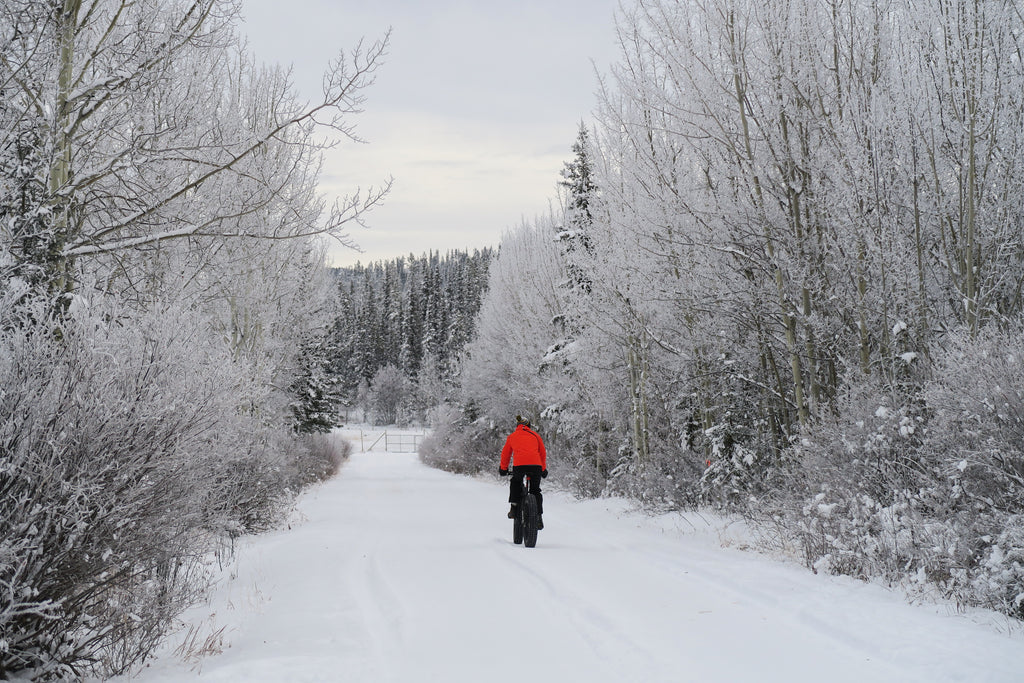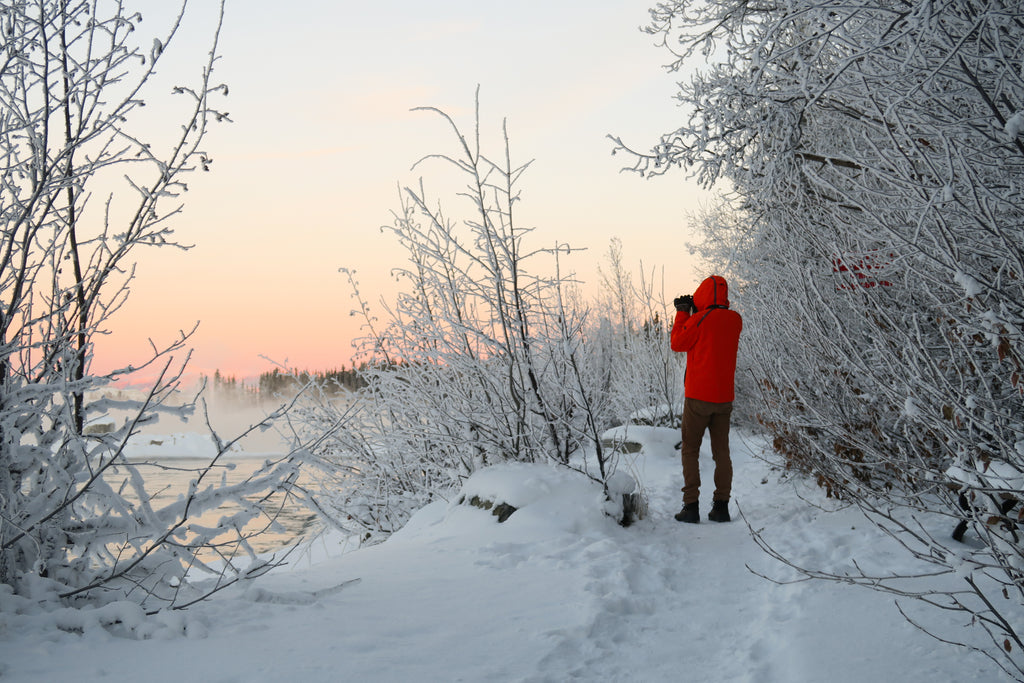A WINTER WILDLIFE SAFARI WITH RACHEL BERTSCH
In a territory where frostbite warnings and severe weather advisories seem regular, you’d be forgiven for wanting to never leave the warmth of the indoors. But for those of us who live in the North, a place where temperatures below zero are hardly noticed but each daylight hour is deemed precious, we know that minus sixteen with no wind is still a good day for adventuring.

Across the river valleys and beyond the snowy peaks, we are surrounded by a wilderness blanketed in white. Every direction beckons and intrigues the adventurous spirit. The debate of how to celebrate the day began at sunrise on the waters edge, at 10:00am.
Early mornings do not exist in the winter months.
Equipped with a thermos, a fat bike, and a camera, we settled on a wildlife safari about 30 min from downtown Whitehorse, the capital of Canada’s northern territory of the Yukon. To be fair, we also didn’t dare step foot outside without thermal socks, waterproof boots, thermal underwear, serious mittens, fleece sweaters, snow pants, and a ski jacket either. Getting dressed for the day is never a quick task.

Following roads coated in a fresh dusting of powder, we started our peddle in search for some of the largest animals that call this place home: moose, deer, caribou, lynx, and fox.
To our excitement, we found them all.
First up was a moose carefully scratching his antlers against the bark of a thin tree. The crunch of snow beneath our fat bike was no comparison to the grunt and groan of the almost 700kg mammal. We watched as the moose rubbed his antlers against the snow covered pine, gently enough not to break the tree but hard enough to have the snow from the needles and branches fall gracefully to the ground.

Moose tend to lose their antlers each year between December and March, and we waited patiently to see if this was the time his shovel shaped antlers would drop. It wasn’t. The Yukon is home to nearly 70,000 moose, double the amount of our human population. With each male losing his antlers annually, finding relics of antlers in the bush is common, as is finding antlers on the outside of homes used for decoration.
As the deep guttural groans of the moose continued, we decided to carry on, only to find a huddle of furry giants known as muskoxen. In the same family as sheep and goat, but often confused for a buffalo, muskox used to roam the northern hemisphere alongside wooly mammoths and other ice age creatures.

It is said they form close family ties, and protect their young by forming a cohesive circle around them. Standing side by side in a close knit group, I looked closely for the stubby legs of a calve and imagined a bond of brothers enduring the winter’s harsh life. With deep set eyes nearly wool covered it is hard to make eye contact, but as the thick steam seeped from the muskoxen nostrils and the curved horns pointed our way, we decided it might be time to move on.

From the dead stares of musk ox, we continued along our snowy journey. Beyond the frosted birch trees we searched beneath the fluffy white covered pines for the silhouettes of the cawing raven. The iridescent green tail feathers of a black billed magpie caught my eye as it scavenged on the remains left by a fox’s dinner.
Few creatures look as curious and playful than that of the fox. In near total camoflauge, we watched as the white furred arctic fox sniffed out its next meal. Thick fur covers its entire body, down to its tiny paws letting the fox maneuver in silence. Surprisingly, come spring as the snow melts and rocky ground appears, the arctic fox will turn a shade of bluish black to camouflage once more.

My time in the north has been peppered with close up experiences with the red fox. I see them in my backyard, on top of my car and walking beside me on the footpath. Our fat bike safari provides another interaction and from a distance I can see its large ears perk as my footsteps and bike tires disturb the snow. Our eyes meet if only for a second, until the hunt resumes to find its next meal. High above on a rock, a face appears and I see the details of silver and white wisps of fur on a black body. It is a variety of red fox actually known as a silver fox, and spotting it leaves a lasting memory in a landscape with few variations of colour.

Time moves rather quickly while wildlife spotting. It never feels dull and never feels long enough. Spotting the horizon turning a soft shade of gold, I step back on the bike and peddle towards home. By 3:00pm, we have just an hour to go until sunset and just about an hour of exploring left. The temperature may still be hovering in the negative teens, but it was still a good day by anyones measure.




